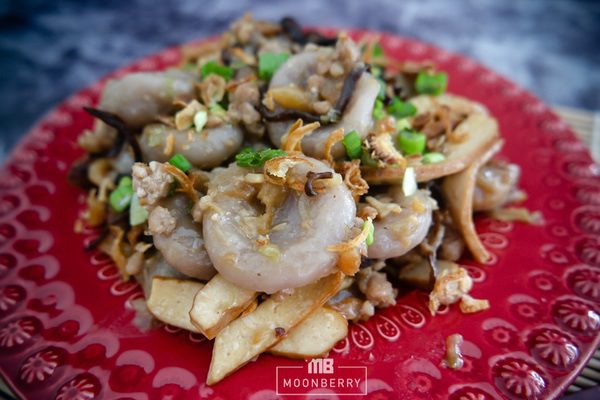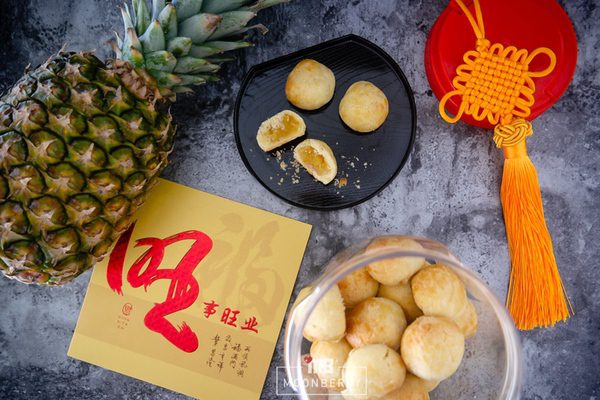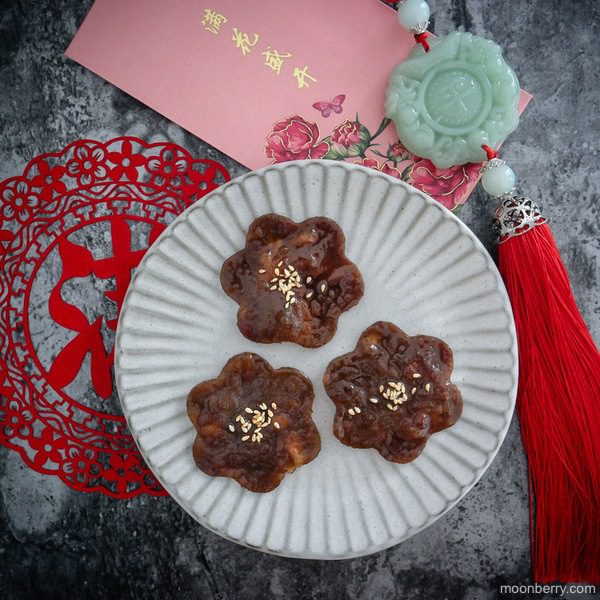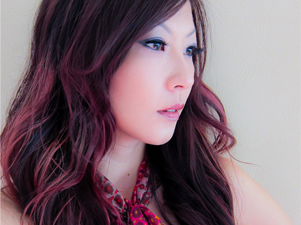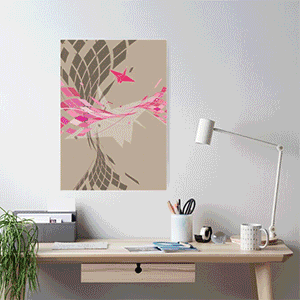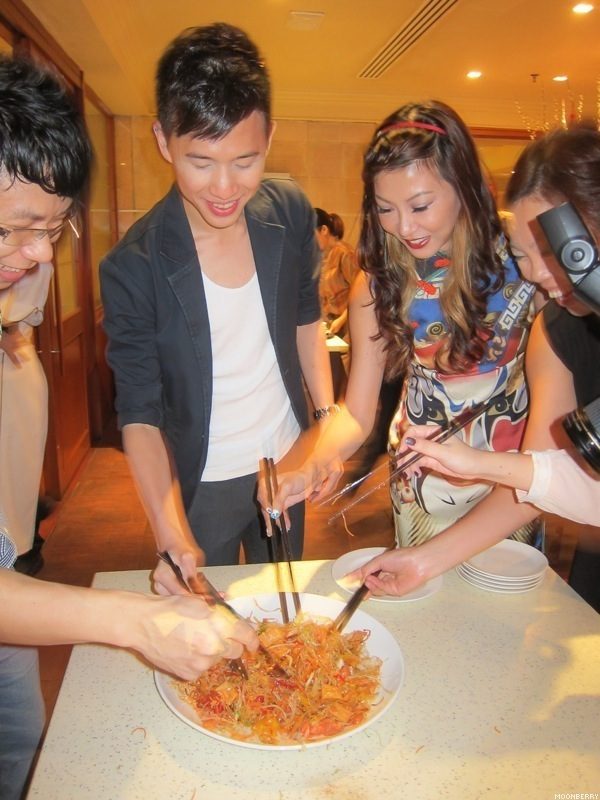
Prosperity Buffet to usher in Chinese New Year! Chinese New Year falls on February 10, 2013 this year and we are welcoming the Year of The Snake! Like Thanksgiving, Christmas and other family-oriented holidays, I normally spent Chinese New Year either quietly alone at home or informally with other overseas “orphan” friends.
The reason for this is because I haven’t lived with or nearby my family since young. Even though this sounds like a sob story, I assure you it’s actually not because I genuinely enjoy the solitary peace.
But ever since I moved to Singapore, I got to partake in a Chinese New Year dinner table ritual known as Yu Sheng, or lo hei (if you’re Cantonese), aka Prosperity Toss. It’s a communal dish of Teochew-style raw fish salad which is assembled at the dining table and includes an assortment of ingredients to symbolize auspiciousness and prosperity. To date, I’ve had Yu Sheng about four or five times now and it’s always been fun.
I was invited to join a bunch of food blogger friends to have Chinese New Year buffet-style dinner at ParkRoyal on Beach Road last week. It’s called Prosperity Buffet and I had Yu Sheng + other delicious food with the group.
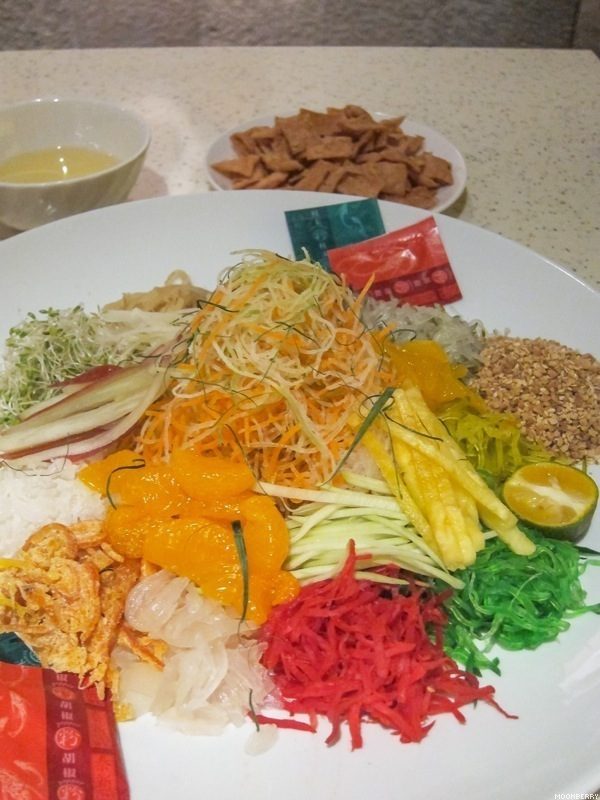
The version featured at ParkRoyal on Beach Road is Tropical Fruits Yu Sheng. I find it to be quite refreshing as it had julienned water apples, rock melon, dried persimmons, green mango, papaya, peaches and mandarin oranges. Went really very nicely with the raw salmon that was also in this salad.
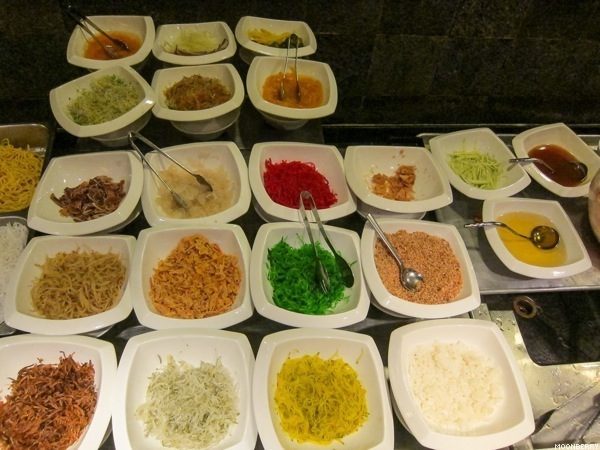
The various ingredients and condiments that go into the Tropical Fruits Yu Sheng.
In case you’re curious, the flavor of this raw fish salad leans more towards the sweet side as the sauce is usually plum-sauce with a spritz of lime juice. Check out how to make a simple DIY Yu Sheng Sauce if you are keen to do Prosperity Toss at home.
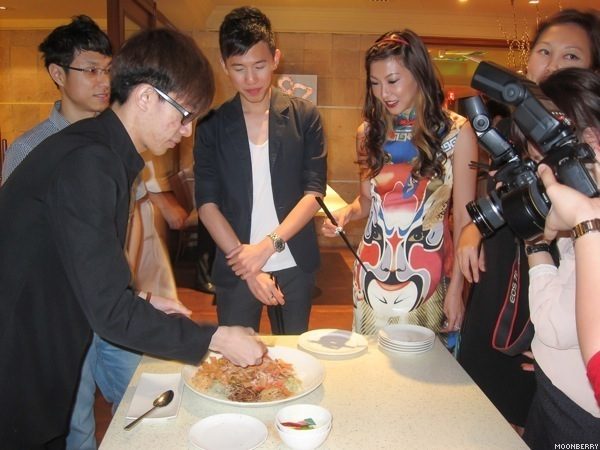
Here’s the waitstaff assembling the Yu Sheng for us.
Whenever a particular ingredient is added to the platter, it is customary to recite some sort of Chinese auspicious sayings – like, “Wishing you good health”, or “May there be gold scattered all over the floor”. Often the phrases are a play of words associated with that ingredient’s name or color or shape. This year, I learned that you’re also supposed to declare “Received!” (收到) after every auspicious saying has been said.
Since this is a happy and festive occasion, everyone’s encouraged to crank up the volume of their normal speaking voices when tossing the salad… for fear that the gods in charge of dispensing good karma can’t hear your requests. :P (I kid, I kid.)
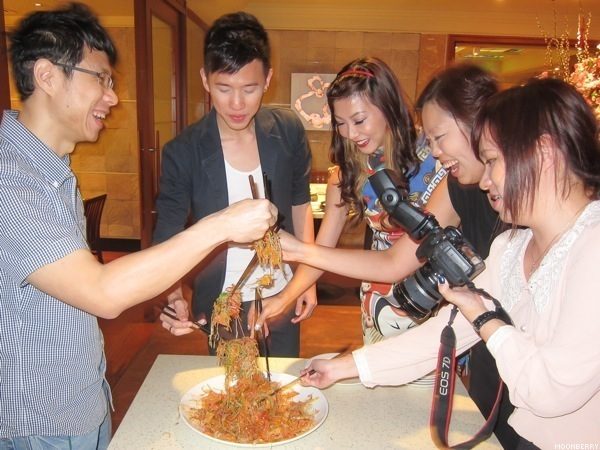
Then comes the act of tossing itself, which always caused slight heart palpitations for me since you’re supposed to toss the salad as high and messy as you can (so that all ingredients are well-incorporated). Not ideal for an OCD like me, but for the sake of group prosperity I too, stuck my chopsticks in and tossed away merrily.
One day if and when I happen to host a Prosperity Toss in my own home, I will need to invent an inverted umbrella-like barrier device to contain all the flying bits of raw fish and vegetables.
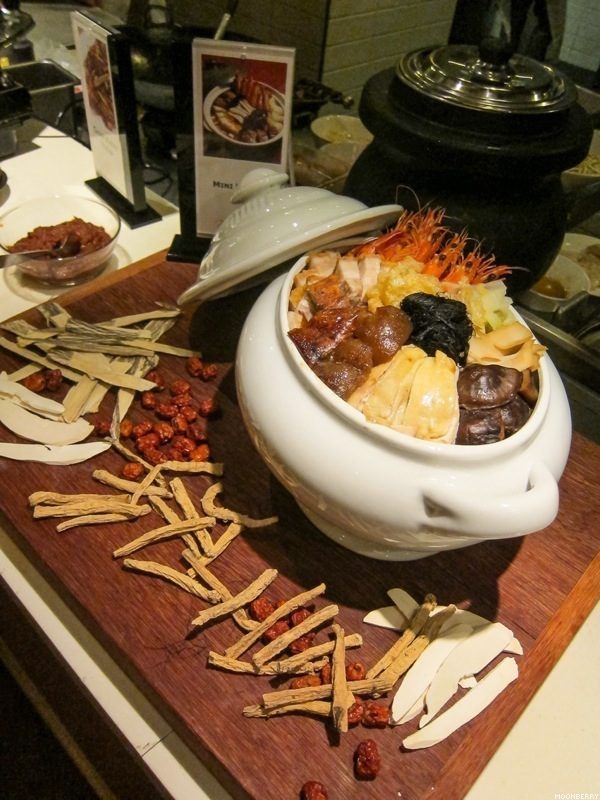
Another popular and staple Chinese New Year dish served at ParkRoyal on Beach Road was Pen Cai – which is a stew of assorted meats, seafood and other special ingredients. I had never had Pen Cai before and this was my first time. *gasp!*
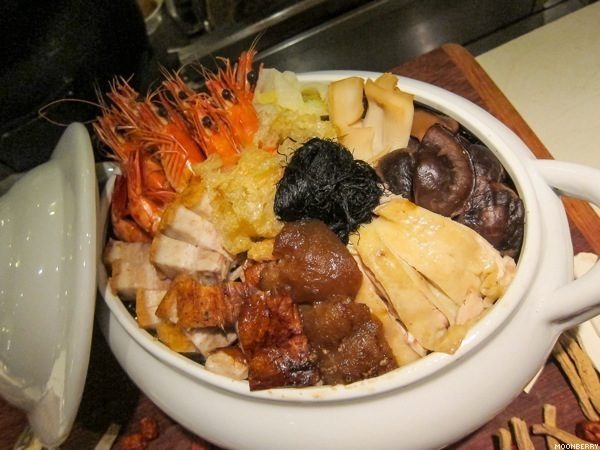
This Pen Cai featured special items such as fish maw, sea cucumber and sliced abalone in addition to roast duck, chicken, roasted pork, prawns and black moss. (Find out why there’s usually not a lot of vegetables in Pen Cai.)
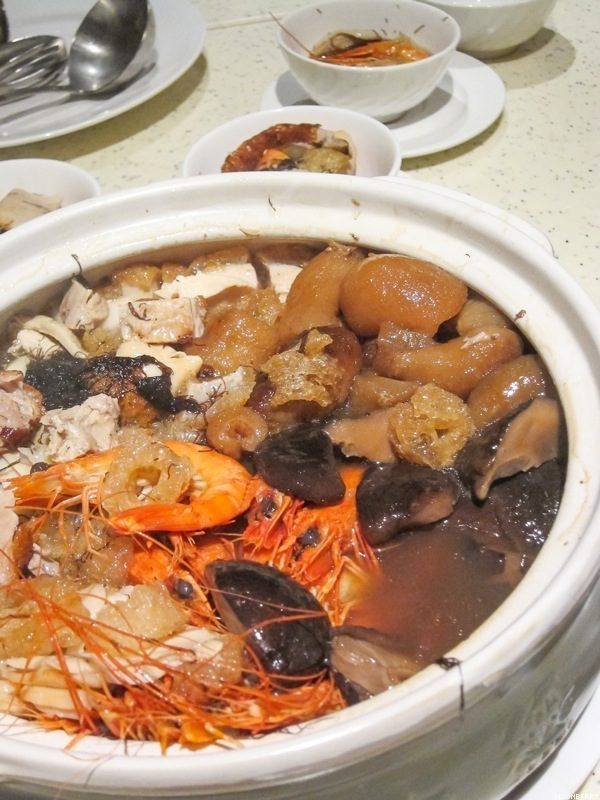
For many years, I had mistakenly thought Pen Cai as a rice dish topped with fancy ingredients. So I was surprised to find out that it’s actually a stew. I enjoyed this very much because I’m a huge fan of Chinese soups.
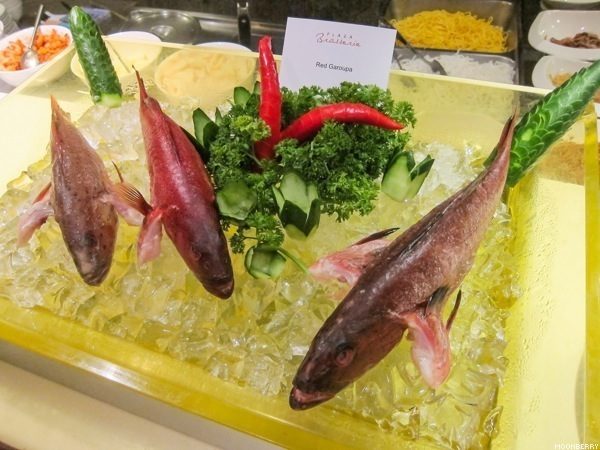
The surprise didn’t stop at Pen Cai for me. ParkRoyal on Beach Road also had Whole Steamed Red Garoupa Fish in Superior Stock served during our Chinese New Year Prosperity Buffet Feast. I don’t think I’ve ever seen a whole live fish served at buffets before, have you? :o
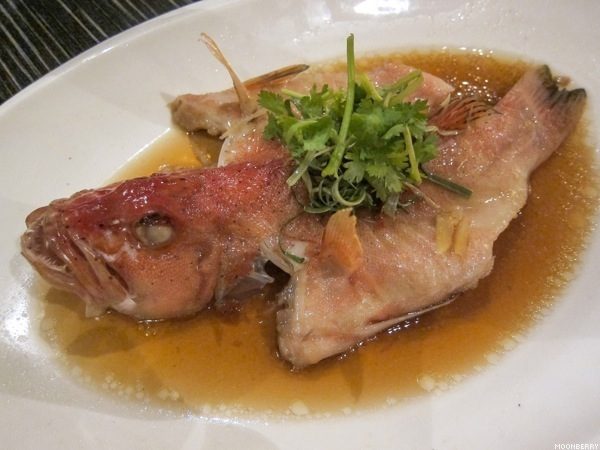
Getting a whole steamed fish was so awesome. The Chinese pronounciation of fish is a homophone for “abundance” which explains why Chinese people love eating fish during Chinese New Year.
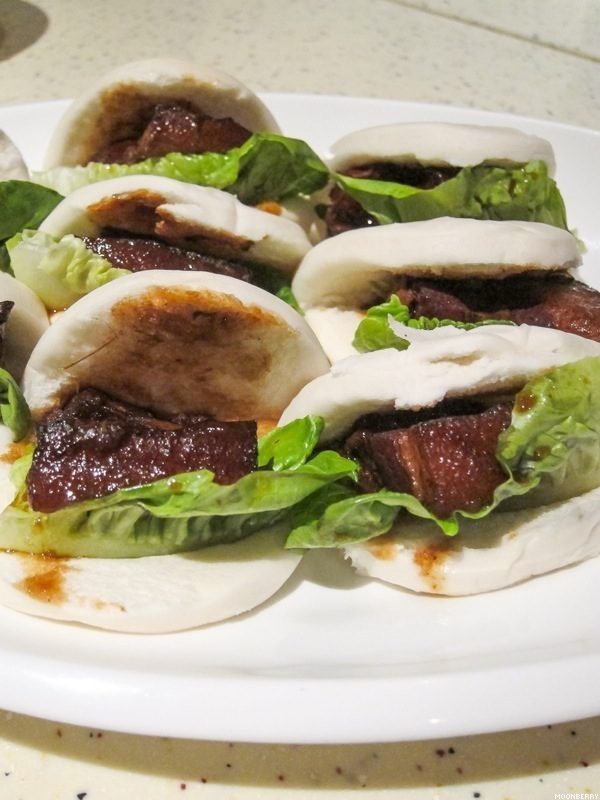
The other thing I had at the Prosperity Buffet was this Kou Rou Bao, which is pork belly that has been cooked for a long time, so that it is soft and tender. The fragrance from the dark soy sauce and five spices powder makes it mouth-watering! It’s eaten like a sandwich and it’s nice to see this featured at the buffet too. I haven’t had these in a while and probably will make this at home soon one of these days.
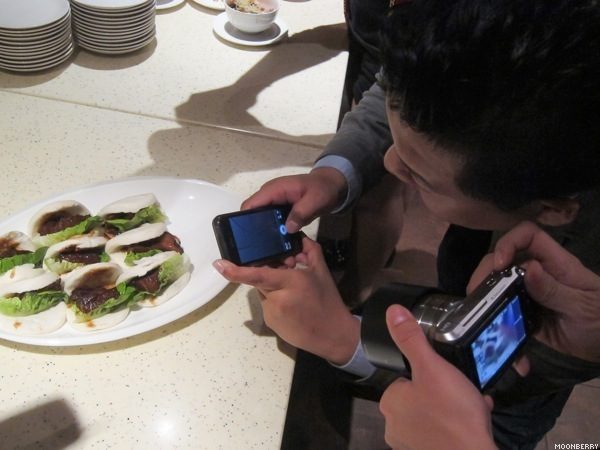
The usual food paparazzi-ing in progress. Btw, has anyone read the recent New York Times article about how some New York restaurants have begun banning food photography?
Restaurants Turn Camera Shy (New York Times)
New York Restaurants Have Informal Ban on Food Photos (ABC News)
I’m often in the company of food bloggers so I can see both sides of the story. I agree that using a big@$$ DSLR with bounce flash is a little over the top for regular diners. I agree that flash photography should definitely be banned. However, foodstagram (ie. a photo taken on a cellphone and quickly posted online) can’t be all that intrusive and maybe the general overall ban is a little on the harsh side? I’m eager to hear your thoughts on this…
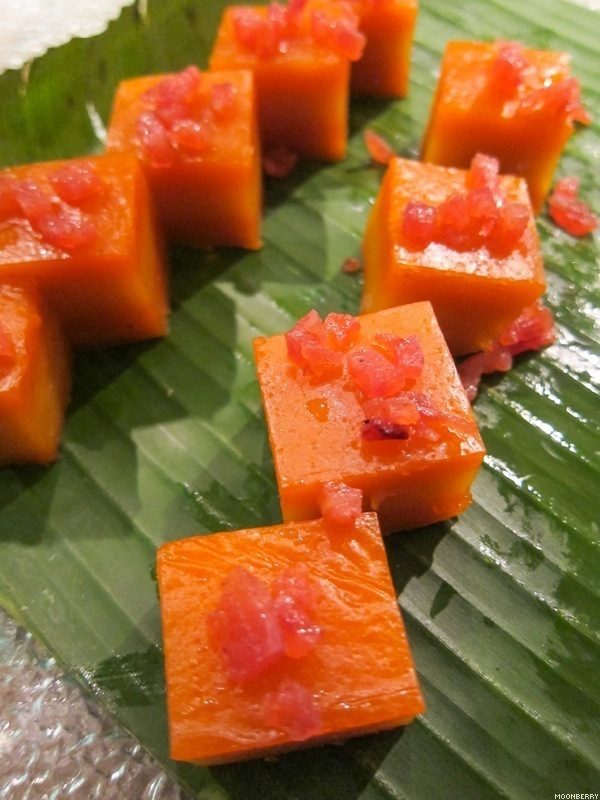
To sweeten the Prosperity Buffet even more, one special dessert item stood out for me: Durian Nian Gao with Bak Kua.
My interpretation: Durian = pungent tropical fruit.
Nian Gao = sticky sweet rice cake/pudding.
Bak Kua = pork jerky.
O_o?!? Whaaaaaaaat.
Strange and unexpected combination of ingredients indeed. That’s what I thought at first. Then I took a bite and was immediately hooked on the delectable flavors playing off one another. Sweet and savory, I say this was a HOMERUN for me (especially because I don’t eat durian). Very well-done. Now where can I find the recipe? :P
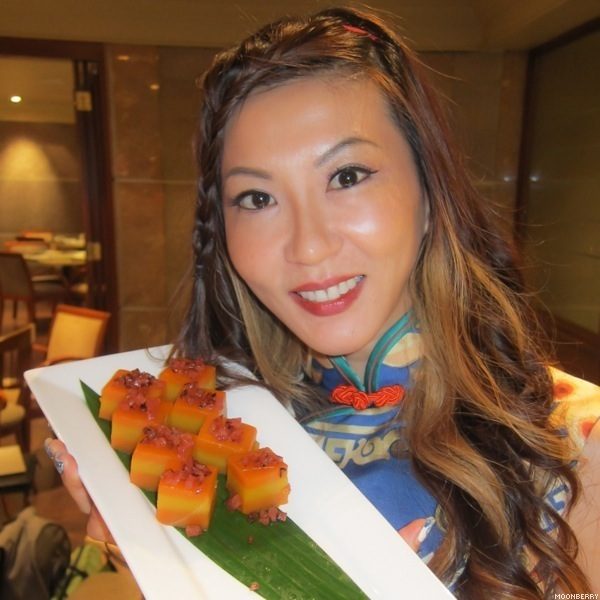
Here’s a Chinese New Year tidbit for you (literally!):
It is considered good luck to eat Nian Gao during this time, because “nian gao” is a homonym for “higher year.” The Chinese word 粘 (nián), meaning “sticky”, is identical in sound to 年, meaning “year”, and the word 糕 (gāo), meaning “cake” is identical in sound to 高, meaning “high or tall”. As such, eating nian gao has the symbolism of raising oneself taller in each coming year (年年高升 nián nián gāo shēng).
This sticky sweet snack was believed to be an offering to the Kitchen God. The aim is for his mouth to be glued shut with the sticky cake, so that he cannot badmouth the human’s family to the God of all Gods.
Seriously, our Chinese ancestors are so imaginative, don’t you think? :) I love these stories and origins of food etc.
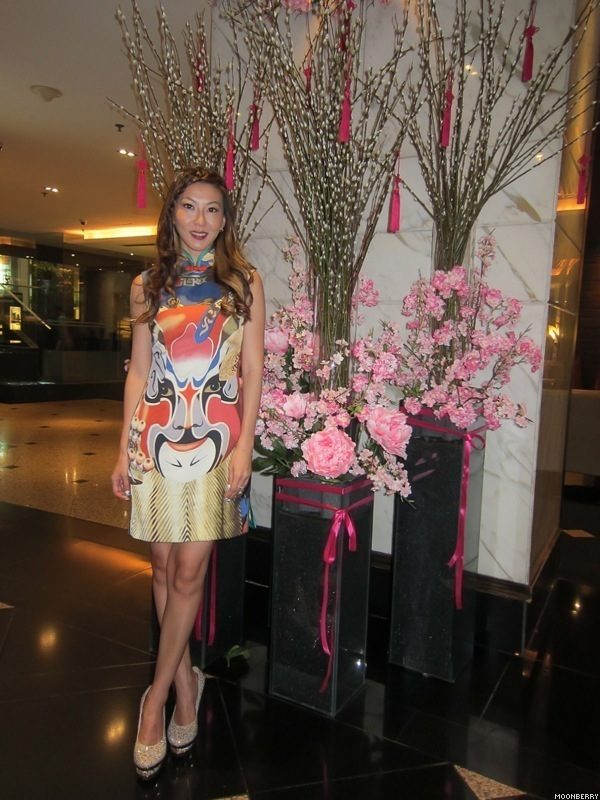
I wore a short cheongsam from Blum & Co. This is the first time for me owning this sort of outfit. The dress is super comfy, silky and fits me like a glove. I love the bright and funky Peking Opera print also! I thought it was appropriate to wear to Chinese New Year-related occasions.
Below are snapshots with the other bloggers/online folks taken during the Prosperity Buffet. Many of whom you’re probably already familiar with, see how many you can spot and identify. ;)
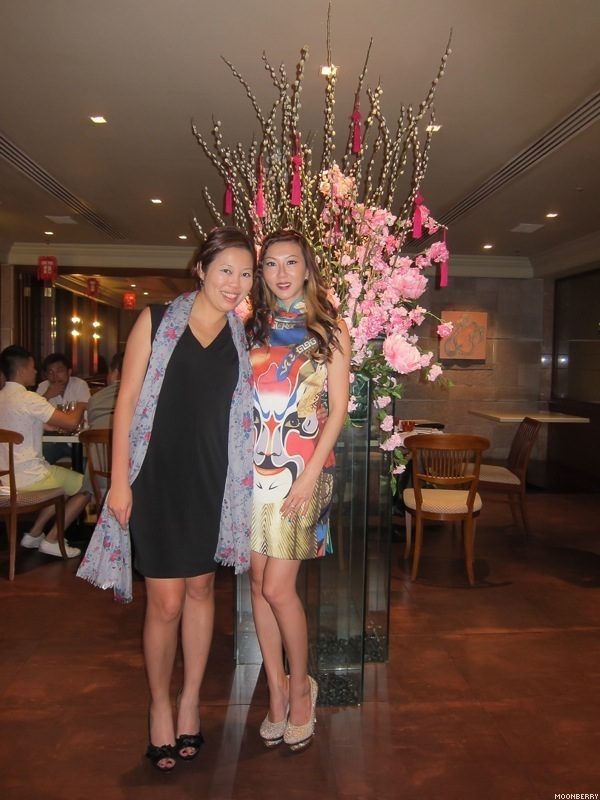
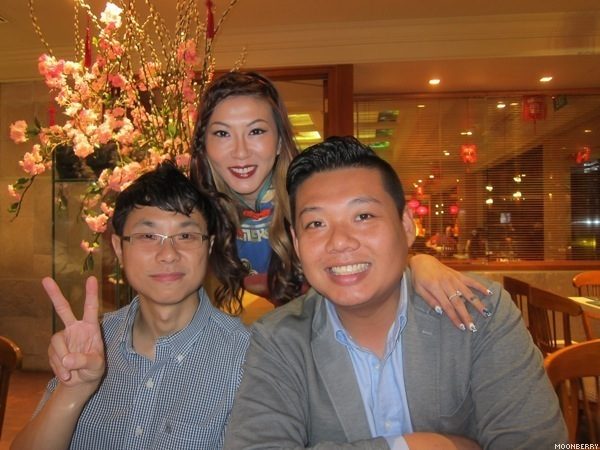
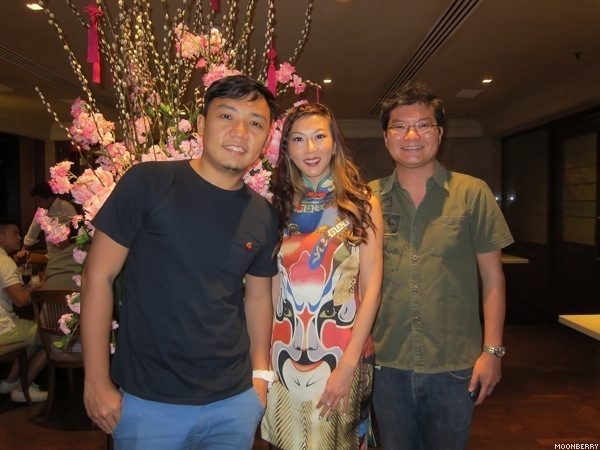
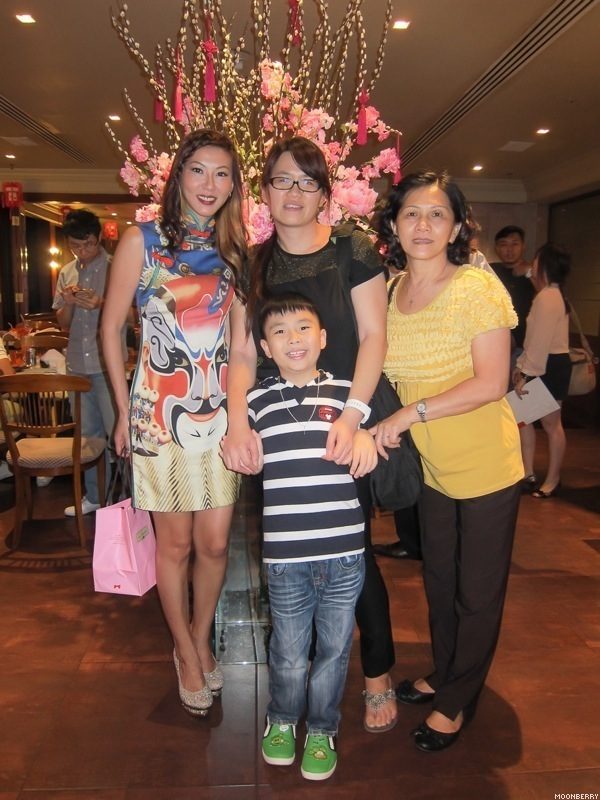
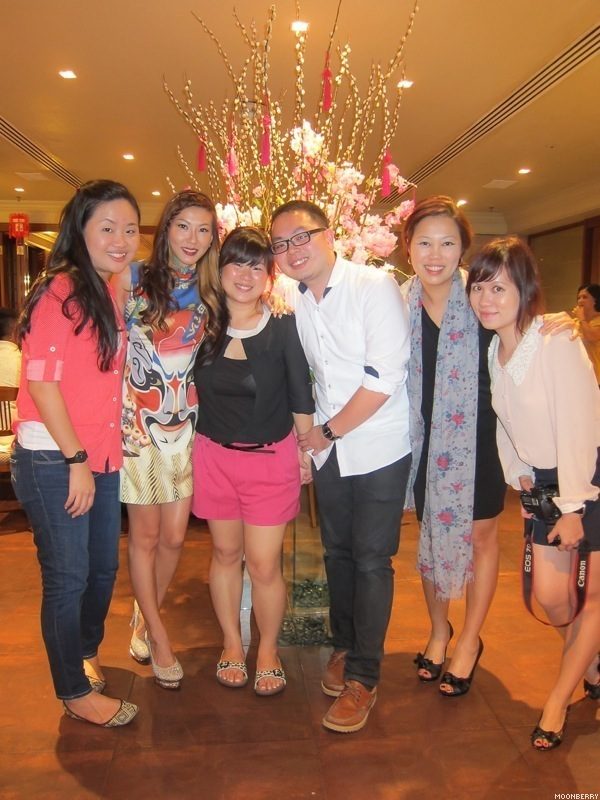
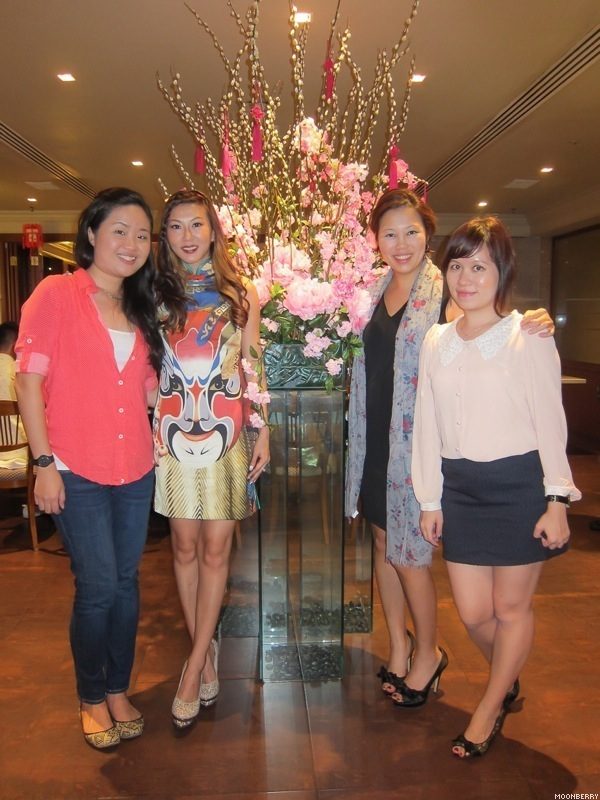
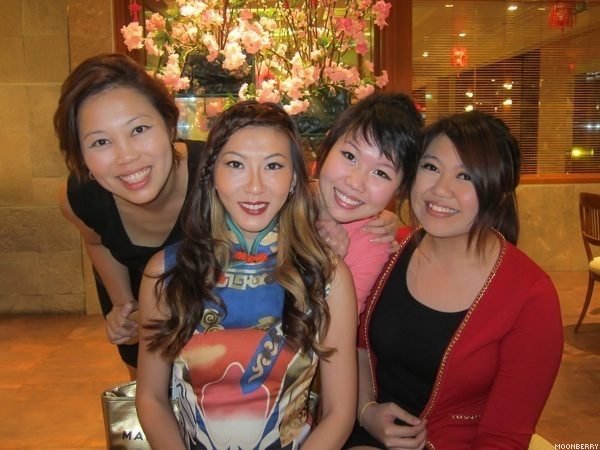
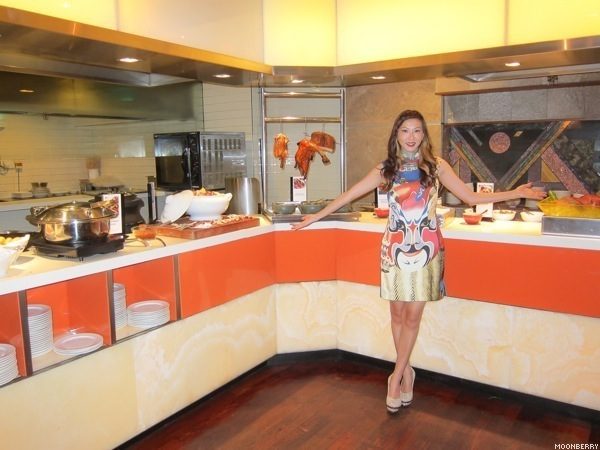
Chinese New Year Prosperity Feast at ParkRoyal on Beach Road
Pre and post Chinese New Year
28 January to 24 February 2012
Adult:$58++/ Child:$35++
Chinese New Year Eve
9 February 2012
Adult:$78++/ Child:$47++
Chinese New Year First & Second Day
10 and 11 February 2012
Adult:$62++/ Child:$37++
ParkRoyal on Beach Road
7500A Beach Road
Singapore 199591
Tel:6505 5666
.
.
.
Counting down to CNY,
-MB.

Enjoyed reading this post? I’d love it tons if you give me a thumb-up! ♥ ♥ ♥

